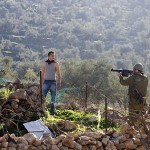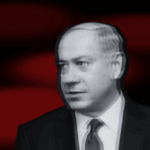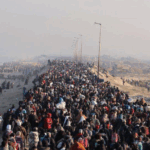Between Politics and Principles: Hamas’ Perilous Maneuvers

Hamas is attempting to reinvent itself. (Photo: via Aljazeera)
By Ramzy Baroud
Despite all of Hamas’ assurances to the contrary, a defining struggle is taking place within the Palestinian Islamic movement. The outcome of this struggle – which is still confined to polite political disagreements and occasional intellectual tussle – is likely to change Hamas’ outlook, if not fundamentally alter its position within a quickly changing Arab political landscape.
The current Hamas is already different from the one initially set up by a local Gaza leadership in December 1987 in response to the first Palestinian uprising. One of the very first statements circulated by their newly established ‘military wing’ (masked men armed with wooden clubs and cans of spray paint) expressed the nature of that political era:
“What has happened to you, O rulers of Egypt? Were you asleep in the period of the treaty of shame and surrender, the Camp David treaty? Has your national zealousness died and your pride ran out while the Zionists daily perpetrate grave and base crimes against the people and the children?”
Although the power discrepancy between Israel and the Palestinians has remained largely unchanged, Hamas has morphed from a local Palestinian branch of Egypt’s Muslim Brotherhood into a tour de force within Palestinian society. It has also become an important regional player, long designated by the US and Israel as a member of the radical camp in the Middle East (the other members being Iran, Syria and Hezbollah). While Iran and Syria were demonized for aiding and enabling Palestinian and Lebanese resistance to Israel, Hamas and Hezbollah successfully resisted Israel’s military adventures in Gaza and Lebanon.
Arab revolutions, however, forced a remarkable transformation in terms of power relations in the region. Longtime symbols of Western influence in Tunisia, Egypt and Yemen were violently and decisively forced out of power, although their cronies are still battling for position and sway. The ‘moderate camp’ was shocked to its core by the removal of Honsi Mubarak, who, for three decades, diligently guarded a pro-American fort in exchange for a fixed sum of money. The dramatic events that swept the Arab world required urgent action, a spectacular jockeying for influence – to either coerce where change was deemed unacceptable, or exploit genuine, homegrown uprisings where change presented an opportunity to settle scores.
Syria was a prime example of the latter. It is widely understood that to balance the power play of gains and losses, the removal of Mubarak could only be offset with the ousting of Syria’s President Bashar al-Assad. Only then would the game return to a state of normalcy – especially when we consider the diminishing American influence in the region following its withdrawal from Iraq. Unfortunately for Syria, the conflict was quickly redrawn around regional politics. The horrifying violence in Syria is being contextualized within dangerous paradigms concerning NATO intervention and some Arab countries’ insistence on transforming the civil war into a zero-sum game.
Hamas, which had successfully survived factional rivalry, Israeli wars and international isolation, was faced with its most pressing dilemma since the legislative elections of January 2006. On one hand, the so-called Arab Spring has ushered the unmistakable (and predicted) rise of Islamic political forces – of which Hamas is part and parcel. On the other, it has confusingly renovated the political equilibrium of the entire region.
It is no secret that without Iran’s financial support, Hamas would have found it very difficult to operate in the Gaza Strip following the Israeli blockade in 2007. Damascus had provided Hamas with a political platform, allowing the Islamic movement a level of freedom to propagate its ideas and take some of the heat off its besieged leadership in Gaza and the West Bank. Disowning its allies due to a growingly polarizing political (and sectarian) discourse in the region is not an easy decision by any means. Here lies Hamas’ predicament.
Political realism is unavoidably opportunistic. Hamas’ reputation among its supporters was maintained through a careful balance between political savvy and religiously motivated ideological principles. Revolutionary times can upset any balance, however skillfully cultivated. A series of agreements between Hamas and Fatah – including the landmark Doha accord on February 6 – were attributed to the reformatting of regional alliances: Mahmoud Abbas’ Fatah suffered a serious blow with the ousting of Mubarak, and Hamas’ future in Syria looked increasingly dim in light of the escalating violence.
Although Palestinians have been demanding reconciliation between the rivals, to no avail, the successive unity episodes were incriminating to both parties as national accord and resisting Israel proved less urgent than regional politics. Hamas’ drift to a new camp continued at astonishing speed. Hamas’s leaders in Damascus, and also Gaza went out on regional tours, hoping to forge new alliances to the once shunned resistance movement. And in another twist, exiled Hamas leaders have suddenly emerged as agents of political moderation. The swiftness of the new terminology is explained by Brian Murphy and Karin Laub: “The movement’s top leader in exile, Khaled Mashaal, wants Hamas to be part of the broader Islamist political rise…For this, Hamas needs new friends like the wealthy Gulf states that are at odds with Iran” (AP, Feb 9).
Writing in the Lebanese Daily Star, Michael Broning, Israel-based director of the German Friedrich-Ebert-Stiftung foundation, agrees. “Meshaal has come to represent a force of change,” he states, while Gaza Prime Minister Ismail Haniyeh “represents the conservative wing of Gaza’s Hamas leadership.” Thus a long-coveted opening is presenting itself as “disagreements within Hamas have been escalating, pitting the movement’s diaspora leadership against the Hamas-led Gaza administration.” Tellingly, the title of Broning’s article is: “Engage Hamas’ moderates and test their newfound flexibility” (Feb 24).
Some commentators, Broning included, are widely speculating on the future of the movement. News outlets are rife with reports regarding Hamas’ maneuvering – whether compelled by political necessity or propelled by the ideological triumph of Islamist forces in the region.
Hamas might be reinventing itself, or it may simply be trying to weather the storm. Either way, the political context of Hamas’ maneuvers is quickly leaving its traditional home (the Israeli occupation), and moving into a whole new dimension regarding the region as a whole. While Hamas might convincingly argue that survival necessitates measured shifts in politics, it is more difficult to explain how quickly and readily regional politicking is trumping national priorities.
Indeed, the line separating principles and politics can at times be a very fine one.
– Ramzy Baroud (www.ramzybaroud.net) is an internationally-syndicated columnist and the editor of PalestineChronicle.com. His latest book is My Father Was a Freedom Fighter: Gaza’s Untold Story (Pluto Press, London).










































0 Comments